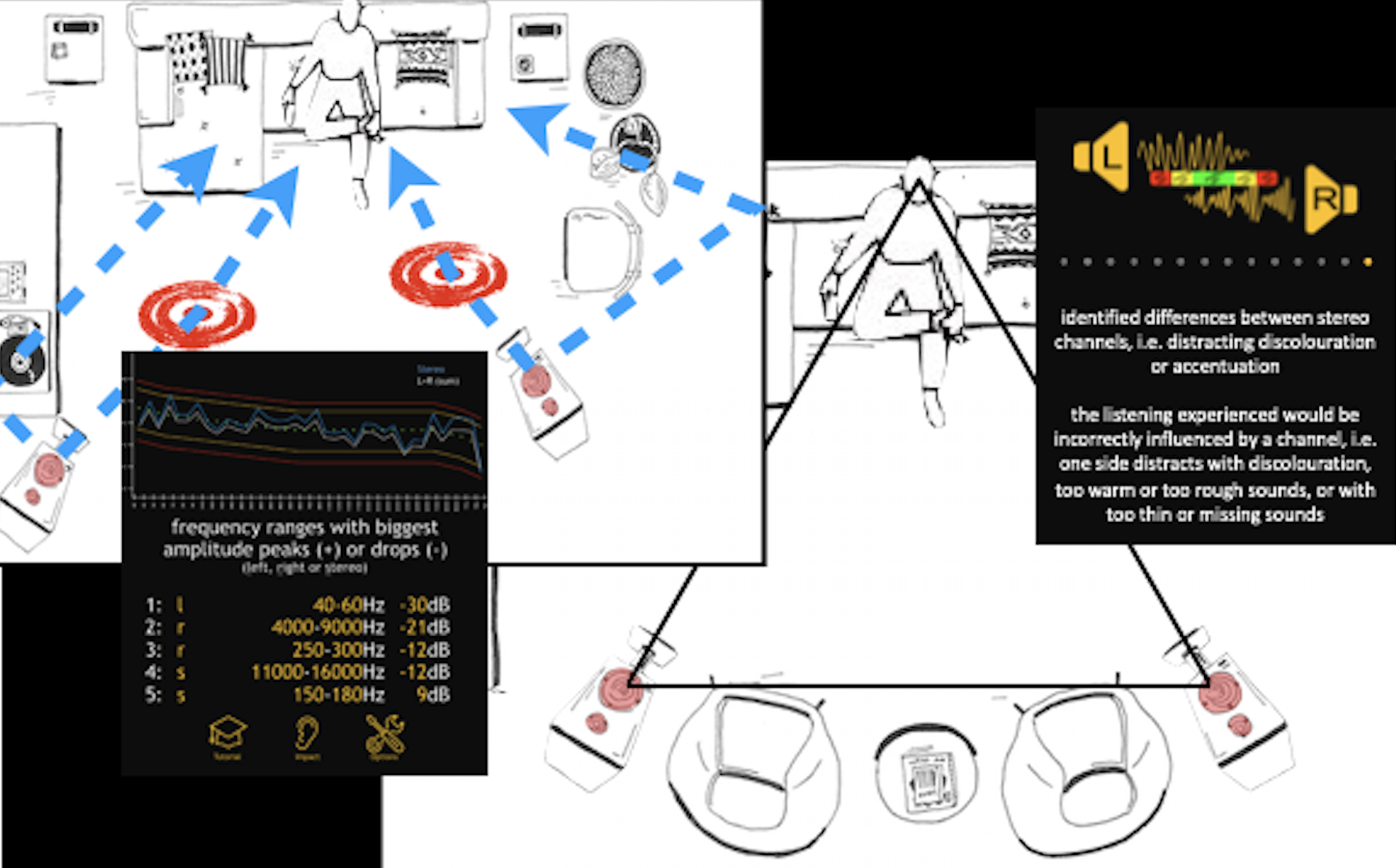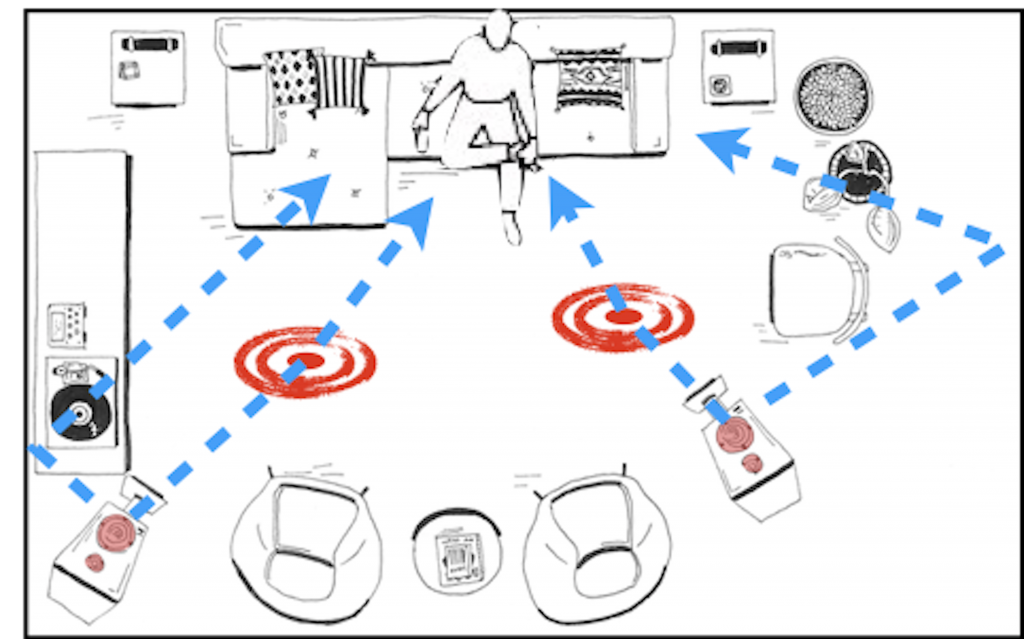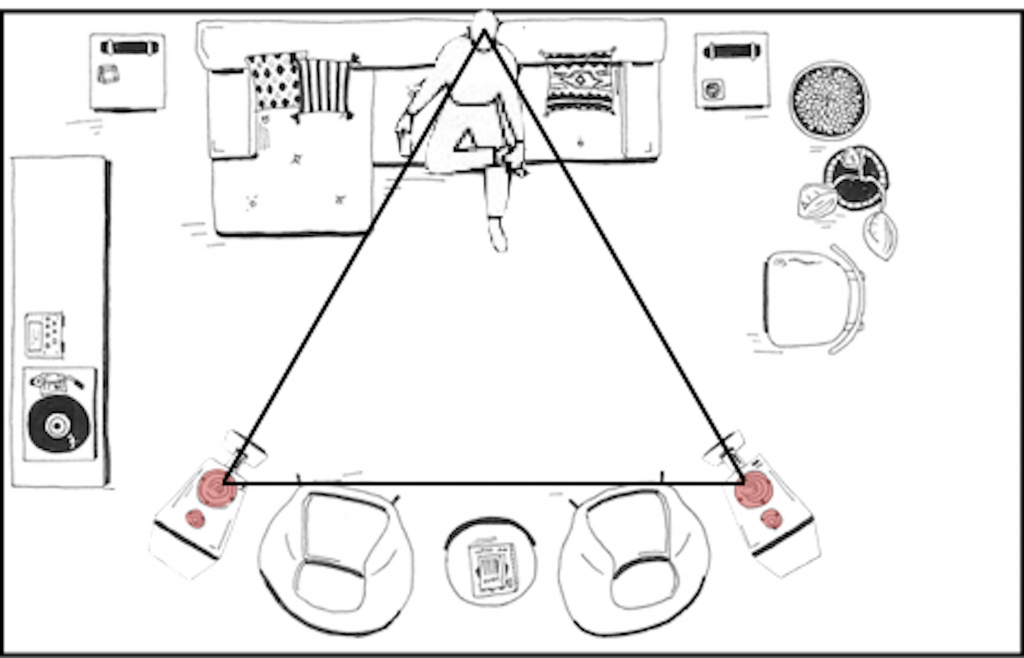
Flaws in audio at listening position – frequency response channel correlation
![]() Text to speech – TestHiFi blog: Flaws in audio at listening position – frequency response channel correlation
Text to speech – TestHiFi blog: Flaws in audio at listening position – frequency response channel correlation
Theory explanation 
Frequency response channel correlation at listening position
We described the frequency response amplitude level or flat frequency response very much in the criteria frequency response at listening position. There is another important aspect to the frequency response analysis. The difference between left and right channel.
The difference between left and right rather indicate room influence to the received sound at listening position. Similarities between left and right channel might indicate both, system related influences and room influences. All under the assumption, that left and right channel of the audio system have the same design (respectively mirrored).
Symmetric or asymmetric room layout
Many studio designs or well designed listening rooms have a quiet symmetric layout. Most of our living rooms or else rooms where we listen to music do not have such strict symmetric layout. Even in case the room itself is symmetric, the positioning of the listening furniture, the audio system and its speakers results even more often in an asymmetric layout.

Reflected sound influences the listening experience
Speaker directivity, distance and the reflection from any material surrounding the speakers influence the sound we hear at our listening position.
The given situation in many cases is not equal for each channel, as distance and reflection make the sound different for each channel.
A mono recording played on one channel would sound different to the same recording played on an other channel. Even the channels might be build the same (resp. mirrored) the sound might differ to a huge degree. Remember the explanations in frequency response at listening position, frequency response amplitude drop and frequency response amplitude peaks, speakers positioned closer into a corner might sound more bass heavy. Floor reflections might cause severe drops in bass due to comb filtering.
Those effects are probably less obvious to hear, as we mostly listen to stereo recorded music and as such the music is different between the channels. However a cello or a bass might sound different if it is positioned left or right on the sound stage, i.e. reproduced through the left or right channel.
Impact on listening 
The setup of the audio system within a room and the room condition might influence the channels to a huge degree different. This can result in a variety of drops and peaks in the frequency response of each channel at listening position. At the same time, the audio system itself, same on left and right channel, might deliver some drops and peaks. Room influences and system induced influences might combine to positive ore negative impacts. This makes it a quite cumbersome issue to fix, respectively to optimize as fare as possible or reasonable.
As mentioned before, effects might be that a cello or a bass sound different when positioned left or right on the sound stage, i.e. reproduced through the left or right channel.
The same sound played on one channel would sound different to that sound played on the other channel. To identify differences between the channels it is important to have the same sound coming through both channels, at the same time or one after each other.
Effects of non correlating channels
Differences might be that one speaker, positioned closer into a corner, might sound more bass heavy. while a second speaker positioned at a distance that creates floor reflections causing severe drops in bass due to comb filtering. This would result in one channel being bass heavy and the other delivering far less bass sound, – unbalanced bass. Although bass sounds are less locatable, bass coming almost from one side only, is easily recognizable, it would result in significant less bass sound overall and such unbalanced sound is perceived subjectively quite unpleased.
Similar can happen with mid or upper frequencies. One side appears to be louder, more shrill or maybe more mid frequency heavy.
Stereo impact
As described in the criteria stereo capability, two channels are important to replay stereo sound.
Descriptions of stereophonic sound tend to stress the ability to localize the position of each instrument in space, but this would only be true with an audio system and setup being capable to replay stereo information. With one channel being significant different to the other channel, the stereo sound stage effect might be compromised. That could result in reduced ability to recognize sound stage effects. Depending on which frequency areas appear louder through which channel, instruments or vocals might appear to be positioned wrongly.
What can I do? When … an audio system ![]()
… buying …
Choose your system in accordance with your listening preference
This criterion is rather of less importance when buying an audio system. The decision to buy a stereo system in combination with the room influence will more likely drive the requirement for some acoustical room treatment than to choose a different system. However the minimum prerequisite for a good reproduced sound stage experience is a stereo system with sufficient space between the left and right channel.
… setting up …
The vinyl factory provides some simple explanation for speaker setup as a starting point. When analyzing the correlation between the left and right channel, many options for optimizing can experimented with to optimize the correlation as well as the stereo frequency response.

As described in the stereo capability criterion, the equilateral triangle is a base orientation for the speaker setup. Speaker direction and distance to listening position are important factors too. Floor reflections and all other reflections are very influencing the sound experience. Absorption materials can help to reduce most significant drops or peaks. While all of those criteria tend to be opposed to the typically or mainstream expected cosy design for a living room.
… listening to …
There are many digital and analog tools available. Some which allow even for remote control or control via Apps while at listening position. For instance, an equalizer allows to attenuate or accelerate amplitudes of specific frequency ranges, per channel. This is an option to compensate drops or peaks in a frequency range at listening position.
And a rather obvious and simple measure, stay at the sweet-spot while listening (the listeners angle of the equilateral triangle).
(This measurement criteria relates to measurement at listening position- future version of TestHiFi)